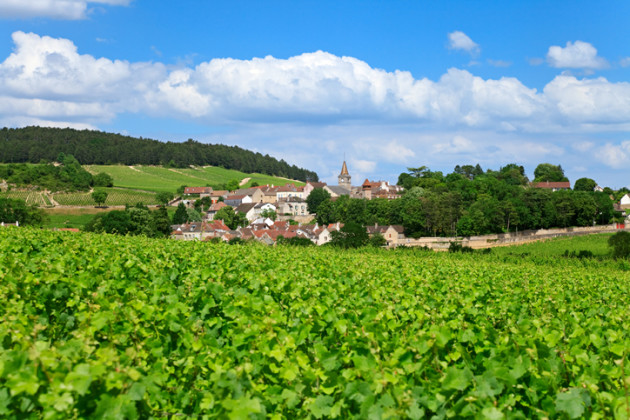
The dry truth of drought in Burgundy
As if 2020 wasn’t bad enough, France faced a drought so bad that water restrictions were put in place. Nowhere was the lack of water felt more keenly than in Burgundy, where irrigation is illegal.
Yet some vignerons have been surprised at how well their grapes have managed. “There was no water,” said Benoît Landanger of Domaine de la Pousse d’Or, speaking of the 2019 vintage. “The quantity of juice was amazing, and the quality is exceptional for the person picking at the right time.”
The secret, he says, is biodynamics, which locks moisture into the soil.
The water problem
Landanger was speaking at a Zoom wine tasting for wine critics last week, where he showed a number of wines from 2018, which he called an “exuberant vintage”.
Domaine de la Pousse d’Or in Volnay, founded in the 16th century, has a rich history dating back many centuries. The property was purchased in 1997 by Patrick Landanger, who began a programme of expansion. Today, the Domaine includes a number of Côte de Nuits vineyards, to a total of 17ha and is managed by Patrick’s son Benoît.
“We are biodynamic since 2014 and have Demeter certification since 2018,” he says. “We don’t write it on the bottle, but the classification makes my team happy.”
Landanger says that the biodynamic (and organic) practice of building humus – the dark organic matter that forms in soil from plant and animal decay, or compost – helps maintain soil hydration.
While some biodynamic practices verge on the mystical, this is one with solid science behind it; the Food and Agriculture Organization of the United Nations says that the higher the organic matter, the more water the soil can hold.
This will be a key insight for Burgundy producers, as its climate becomes hotter and dryer. A 2019 study published by the European Geoscience Union showed how climate change has affected Burgundy’s harvest dates over the past 30 years. “The record shows wine grapes in Burgundy, eastern France, have been picked 13 days earlier on average since 1988 than they were in the previous six centuries,” said the study’s authors.
Landanger says that 50 years ago, Burgundy’s winegrowers were harvesting in October. “My Dad was usually mid-September and we had a good August vacation,” he said. “I am a little bit scared if we have to make harvest earlier, because then we have a lot of change.”
Because Pousse d’Or is supplied solely by grapes from their own vineyards, they can exert more control over how the grapes and soil are managed. “In the future, we have to help the plant to eat less water,” says Landanger, but adds that building organic matter so as to add humidity to the soil is key. He says he exchanges information with other domaines using biodynamics, including Domaine Lafarge and Marquis d’Angerville, “and in 2020 our quantities are all good”.
Still, he says, it is becoming more difficult for the winemaker to choose the first day of harvest.
The proof is in the wines
As for the reaction to his 2018 wines – the wine critics were all enthusiastic. “In the UK,” said one, “the 2018 is usually thought of as a red vintage,” but he found the white – the Le Cailleret Puligny-Montrachet – to be full of acidity and tension.
A discussion then ensued about Landanger’s use of amphorae, which he has used for three cuvées since 2015. “Our terroir is so magic, why do we add wood tannins?” he said, adding that the wines from amphora offer much more fruit than wines matured in wood.
Landanger will not be the only Burgundy vigneron experimenting with new ways to make wine as, in some ways, the future looks ominous: more heat, more drought, burned grapes, more pickers needed to get the grapes in faster – and no more leisurely August holidays. But, paradoxically, quality has never been higher and Landanger says there are still parcels across Burgundy where improvements can be made.
Maintaining soil moisture will be one important tool.




